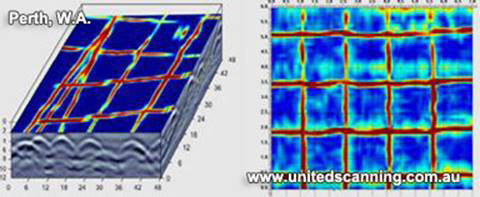Concrete Scanning and Imaging: Introduction Hidden Frameworks
Wiki Article
Past the Surface area: Unraveling the Tricks of GPR Scanning for Concrete Applications
Are you all set to dive deeper right into the globe of GPR scanning for concrete applications? Discover the fundamentals of GPR scanning, find out just how it functions, and check out finest methods for carrying out scans on concrete surfaces.The Fundamentals of GPR Scanning for Concrete Applications
GPR scanning is generally made use of to analyze the problem of concrete structures. When you utilize GPR scanning, you can quickly decipher the secrets that lie below the surface of the concrete. It offers you with valuable details concerning the interior structure of the concrete and aids you determine any type of prospective issues or issues.With GPR scanning, you can swiftly and non-destructively identify the thickness of the concrete piece and find any kind of spaces or delaminations within it - Concrete Scanning and Imaging. This info is critical for reviewing the structural integrity of the concrete and intending any necessary fixings or maintenance
Furthermore, GPR scanning enables you to spot the visibility of strengthening steel bars, also called rebar, within the concrete. This is crucial for assessing the stamina and resilience of the framework, as well as for guaranteeing correct building techniques were complied with.
Additionally, GPR scanning can discover the visibility of moisture or water seepage within the concrete. This is particularly important as wetness can bring about deterioration of the strengthening steel, which can endanger the architectural integrity of the concrete with time.

Understanding the Technology Behind GPR Scanning
To comprehend how it functions, you need to understand the technology behind GPR scanning. Ground Passing Through Radar (GPR) is a non-destructive screening method that makes use of electromagnetic waves to discover subsurface things and functions. The antenna receives the mirrored waves and sends the data back to the control system.GPR scanning operates the concept of time travel. The control device determines the moment it takes for the waves to take a trip to the subsurface and recover. By analyzing the time and intensity of the mirrored waves, GPR can figure out the depth and area of objects within the concrete. Various products have special electro-magnetic residential properties, which influence the method the waves are shown. This permits GPR to compare concrete, rebar, voids, and various other subsurface attributes.
Ideal Practices for Conducting GPR Scanning on Concrete

Interpreting GPR Scanning Results for Concrete Applications
When you have conducted the GPR scans on the concrete, it's time to examine and analyze the results to acquire click reference useful understandings. The interpretation of GPR scanning results is a crucial step in recognizing the check here problem of the concrete and identifying any type of prospective concerns. When analyzing the GPR data, you ought to begin by trying to find abnormalities or variations in the signals. These abnormalities might show the visibility of gaps, cracks, or other defects within the concrete. Take note of any type of modifications in signal shape, depth, or intensity, as these can provide important information about the concrete's condition.In enhancement to determining problems, the interpretation of GPR outcomes can additionally assist establish the density and composition of different concrete layers. By assessing the representations and diffractions in the GPR data, you can estimate the deepness and density of various layers, such as the concrete cover, support, or any kind of various other embedded elements. This details is crucial for analyzing the structural honesty of the concrete and intending any type of required repair or upkeep work.

Advanced Methods for GPR Scanning in Concrete Analysis
By making use of innovative methods, you can boost the precision and resolution of GPR scans for analyzing concrete frameworks (Concrete Scanning and Imaging). One such technique is called multi-frequency GPR scanning. Overall, by using these advanced strategies, you can significantly improve the efficiency of GPR scanning in analyzing concrete structures.Conclusion
So there you have it - the keys of GPR scanning for concrete applications have actually been unraveled. Currently that you understand the essentials of this technology and just how it works, you can confidently perform GPR scanning on concrete structures. Keep in mind to follow finest practices and translate the outcomes accurately to make certain accurate analysis. And if you're really feeling adventurous, do not hesitate to discover advanced methods in GPR scanning. With this expertise, you'll be able to dive beyond the surface area and uncover the concealed keys of concrete structures.Source Discover the basics of GPR scanning, learn exactly how it functions, and explore finest practices for performing scans on concrete surfaces. When you make use of GPR scanning, you can easily unravel the secrets that exist underneath the surface of the concrete. The analysis of GPR scanning results is a critical step in recognizing the condition of the concrete and determining any kind of possible concerns. In general, by using these innovative methods, you can substantially improve the efficiency of GPR scanning in assessing concrete frameworks.
Now that you understand the basics of this technology and how it works, you can confidently conduct GPR scanning on concrete frameworks.
Report this wiki page